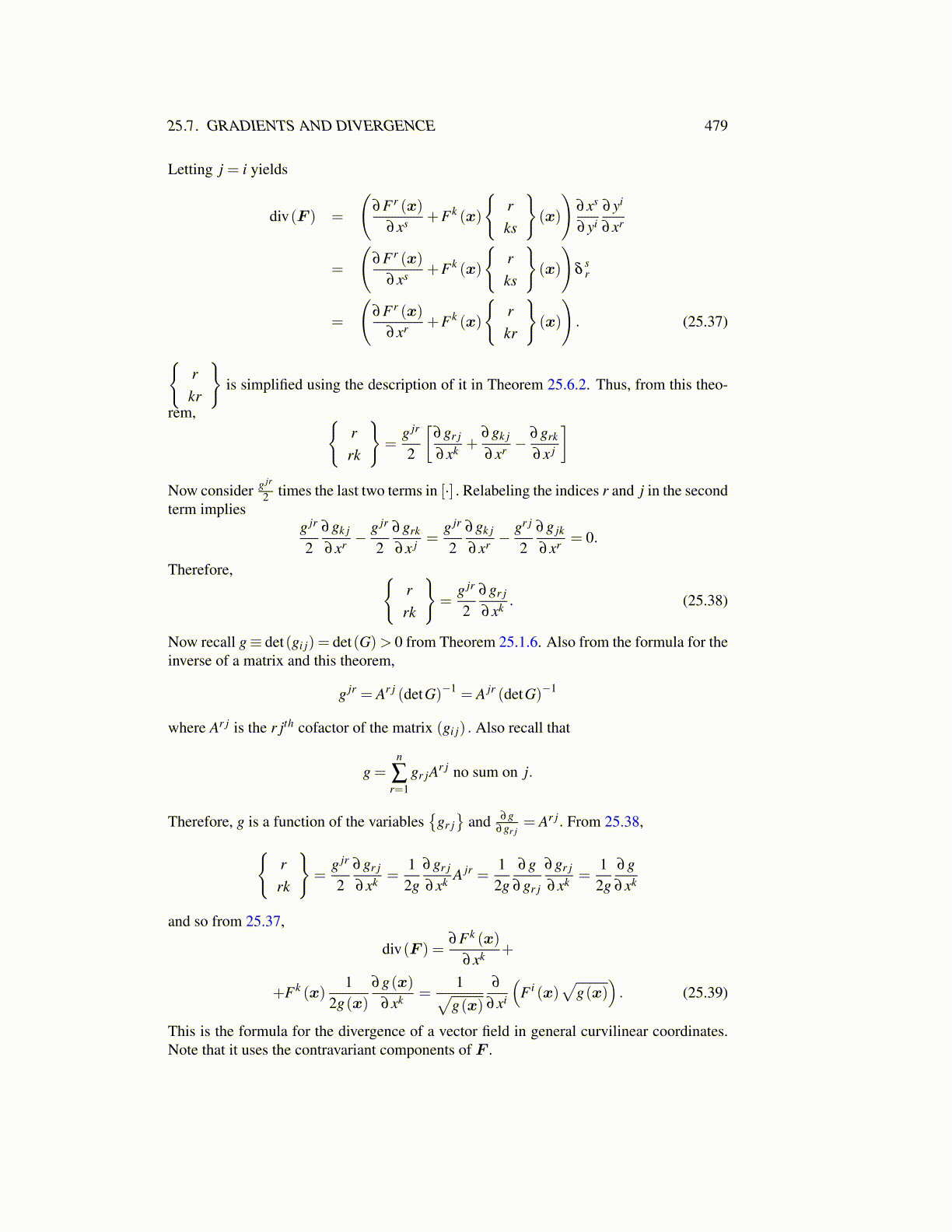
25.7. GRADIENTS AND DIVERGENCE 479
Letting j = i yields
div(F ) =
(∂Fr (x)
∂xs +Fk (x)
{rks
}(x)
)∂xs
∂yi∂yi
∂xr
=
(∂Fr (x)
∂xs +Fk (x)
{rks
}(x)
)δ
sr
=
(∂Fr (x)
∂xr +Fk (x)
{rkr
}(x)
). (25.37)
{rkr
}is simplified using the description of it in Theorem 25.6.2. Thus, from this theo-
rem, {rrk
}=
g jr
2
[∂gr j
∂xk +∂gk j
∂xr −∂grk
∂x j
]Now consider g jr
2 times the last two terms in [·] . Relabeling the indices r and j in the secondterm implies
g jr
2∂gk j
∂xr −g jr
2∂grk
∂x j =g jr
2∂gk j
∂xr −gr j
2∂g jk
∂xr = 0.
Therefore, {rrk
}=
g jr
2∂gr j
∂xk . (25.38)
Now recall g≡ det(gi j) = det(G)> 0 from Theorem 25.1.6. Also from the formula for theinverse of a matrix and this theorem,
g jr = Ar j (detG)−1 = A jr (detG)−1
where Ar j is the r jth cofactor of the matrix (gi j) . Also recall that
g =n
∑r=1
gr jAr j no sum on j.
Therefore, g is a function of the variables{
gr j}
and ∂g∂gr j
= Ar j. From 25.38,{rrk
}=
g jr
2∂gr j
∂xk =1
2g∂gr j
∂xk A jr =1
2g∂g
∂gr j
∂gr j
∂xk =12g
∂g∂xk
and so from 25.37,
div(F ) =∂Fk (x)
∂xk +
+Fk (x)1
2g(x)∂g(x)
∂xk =1√
g(x)
∂
∂xi
(F i (x)
√g(x)
). (25.39)
This is the formula for the divergence of a vector field in general curvilinear coordinates.Note that it uses the contravariant components of F .